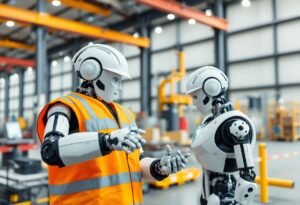Innovative technologies are transforming the way we interact with our environment, and the development of robots that can operate on water is a prime example. These aquatic robots not only replicate nature but also offer a sustainable approach to energy sources, ultimately contributing to advancements in robotics and ecological monitoring.
The Breakthrough of Bacterial-Powered Robots
Recent innovations in robot development have led to the creation of sensors-packed aquatic robots, designed to operate effectively on water surfaces. These robotic bugs are ingeniously modeled after biological systems that use bacteria to generate energy. By employing this bacteria-powered fuel cell technology, the robots are able to maintain their energy needs in a sustainable manner, presenting a fascinating evolution in robotic design.
A Janus Interface for Nutrient Supply
One of the standout features of these aquatic robots is their incorporation of a Janus interface. This unique mechanism allows for a consistent flow of nutrients, essential for the survival and functionality of the robots. The dual-phase design of the interface ensures a stable energy production process while optimizing the efficiency needed to navigate through aquatic environments. These enhancements not only foster improved performance but also significantly extend the operational lifespan of these robots.
The Water Strider Movement
What makes these robots particularly fascinating is their ability to skim across the water’s surface, reminiscent of a water strider. This locomotion minimizes resistance and enhances their ability to maneuver quickly and efficiently. The design has been meticulously crafted to optimize flotation, enabling these machines to glide seamlessly over the water, which opens up a wide range of potential applications in environmental monitoring and research.
Applications in Environmental Monitoring
The potential uses for these aquatic robots are vast and impressive. With their ability to navigate challenging terrains and access remote areas, they are particularly suited for environmental monitoring. These robots can gather vital data on water quality, assess ecological health, and even investigate pollution levels, replacing traditional methods that require human intervention. As a result, they represent an important tool for scientists aiming to understand and protect aquatic ecosystems.
Challenges and Future Directions
Despite their incredible capabilities, the development of these robotic systems is not without challenges. Factors such as durability, scalability, and efficient energy consumption remain paramount concerns. Continued research and innovation will be essential in overcoming these hurdles to ensure these robots can operate effectively in varied environments. Looking ahead, the integration of advanced AI could enhance their autonomous capabilities, leading to even more sophisticated roles in research and observation.
Conclusion: A New Era of Robotic Innovation
The emergence of bacteria-powered aquatic robots reflects a significant leap in both robotics and environmental science. This technology not only allows for more efficient energy usage but also addresses the growing need for sustainable monitoring solutions. As research progresses, we are likely to witness even more groundbreaking developments in this field, paving the way for future innovations.
Disclaimer: The details provided in this article are for informational purposes only and reflect current advancements in the field of robotic technology.





















